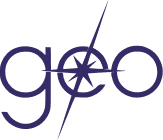Communities harmed by intersecting systems of oppression are facing targeted threats, while nonprofits working in solidarity with them strain to navigate a complex, rapidly changing and often hostile landscape. Harmful provisions in new tax legislation could further weaken the sector, although sector advocates have seen recent wins. In the face of these challenges, many of us are asking: What can grantmakers do to respond with purpose?
At GEO’s 2025 Learning Conference in Charlotte, NC, we heard a clear message: Funders are stepping up. You shared not only your concerns, but also the practical, tactical ways you and other colleagues across philanthropy are taking action. Here are six actions that grantmakers can take now to support thriving nonprofits and communities.
1. Come into community: We heard a powerful reminder at the Learning Conference about the need to come into and be in community. No one of our organizations can respond to the current barrage of challenges alone. Our sector is stronger when we collaborate, build trust and connect with peers across organizations. This requires intentional relationship-building and spaces for shared learning.
→ For more: Find community at upcoming events like our May 21 Community & Partner Call and GEO’s peer learning offerings. CEOs and senior leaders can also apply to join GEO’s Role-Based Convenings to be part of a peer network grounded in trust and support.
2. Step up the pace: Many conference participants expressed frustration with the field’s traditional pace of development — how long it can take to move ideas forward or get resources out the door. We need to be willing to disrupt some of philanthropy’s regular ways of operating. Nonprofits are being asked to act quickly, and they need funders who can do the same — without waiting for every answer to be in place.
→ For more: Plug into one of GEO’s numerous peer communities to dig deep on specific practices and collaborate with peers, including sharing ideas for moving quickly in challenging times.
3. Embrace progress over perfection: We heard that grantmakers can get caught in feeling like their efforts are insufficient — especially when comparing themselves to peers. But this moment calls for action, not perfection. Look for ways to do more within the realm of what’s possible within your organization. Be realistic about internal constraints, and ambitious about how far you can push the boundaries to move resources boldly and without barriers. Celebrate progress, and keep moving forward.
→ For more: Sign on to Meet the Moment: A Call to Action for Philanthropy in 2025 (and Beyond) to join other funders in doing all that is possible at their institutions to support thriving nonprofits and communities. The pledge does not require that we undertake every step right away, but rather is designed to spark discussion, move past outdated norms and support taking action.
4. Center local leaders: We need to keep community at the heart of what we do. At the Learning Conference, we heard again and again that local leaders have the answers for their communities. Grantmaking is most equitable and effective when it meaningfully engages the voices of nonprofits, communities and key partners closest to the challenges we aim to address. Now is the time to accelerate giving, remove restrictions and trust communities to lead.
→ For more: Join GEO’s Community-Driven Philanthropy learning community to surface opportunities and challenges connected to building trust with nonprofits and communities, examine the role of power and engage in peer coaching and other activities. You can also read our recent publication, Community-Driven Philanthropy: Participation, Partnership and Power.
5. Connect values to practice: The Learning Conference brought together the technical practice of learning and evaluation alongside broader learning, particularly around systems change. We heard about the importance of connecting the operations side of the house with programs, and embedding equity not just in discrete initiatives but across institutional systems and leadership. Supporting thriving nonprofits and communities means shifting how we work within our own organizations.
→ For more: Join GEO’s Strategic Learners Network or Equitable Operations learning community, which is dedicated to identifying, interrogating and shifting internal practices with the goal of operationalizing intersectional racial equity.
6. Deepen equity commitments: The pushback against racial equity is real, and grantmakers have a responsibility to act. We heard from many funders who are staying the course, refusing to back down and making equity a greater part of their daily practice. When more funders stay the course, they not only strengthen the communities they support — they also create safety in numbers, making it harder for any one organization to be singled out. When we operationalize racial equity, we close gaps, strengthen communities and make funding more effective. This work is essential and ongoing.
→ For more: Garner inspiration from the many ways that those in the GEO community are putting our values into practice — and learn how the GEO Breakthrough Partnership can support your organization’s equity journey.
The Learning Conference showed us that, together, the philanthropic community can meet this moment — with clarity, courage and collective action. We hope you will continue to stay engaged with your peers at GEO. Stay tuned for forthcoming reflections on the conference from our members, as well as encore session webinars and recordings of conference sessions you can share with your colleagues who were not able to join us. Finally, if you are not already a member of GEO, we invite you to join us in our shared vision of courageous grantmakers working in service of nonprofits and communities to create a just, connected and inclusive society where all can thrive.
